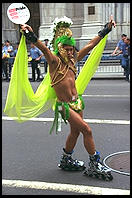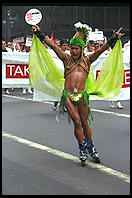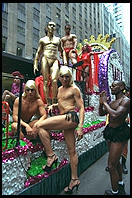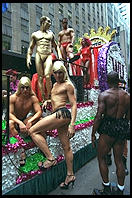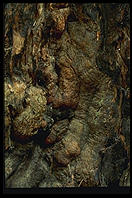
 |
Contents: Reader's Comments |
"With the camera, it's all or nothing. You either get what you're
after at once, or what you do has to be worthless. I don't think the essence of
photography has the hand in it so much. The essence is done very quietly with a
flash of the mind, and with a machine. I think too that photography is editing,
editing after the taking. After knowing what to take, you have to do the
editing."
--
Walker Evans, 1971
You've taken a bunch of pictures. How do you evaluate them to decide if they
are any good?
With slides
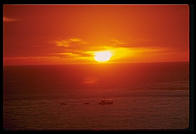 Your pictures will mostly look gorgeous
because slides can hold at least twice as much contrast as prints. You will pat
yourself on the back for being a photographic genius.
Your pictures will mostly look gorgeous
because slides can hold at least twice as much contrast as prints. You will pat
yourself on the back for being a photographic genius.
The first thing you need is a color corrected light table. Don't waste your time trying to build your own. For one thing, the appropriate fluorescent tubes are plenty expensive so you might as well have a decent box to put them in.
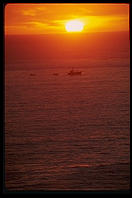 Everyone says the Macbeth Prooflite, the
JUST, and the Kaiser boxes are the best, but I can't find anything wrong with the
Acculights, which are less than half the price ($160 for a 14x24" box). I've had
one in my home studio for 10 years and it still works great. B&H sells these
by the truckload.
Everyone says the Macbeth Prooflite, the
JUST, and the Kaiser boxes are the best, but I can't find anything wrong with the
Acculights, which are less than half the price ($160 for a 14x24" box). I've had
one in my home studio for 10 years and it still works great. B&H sells these
by the truckload.
Set a slide-saver page (I like the Beseler polypropylene ones myself) down on the light table and start stuffing it with mounted 35mm slides. Use a Sharpie super fine point pen to mark the top of the plastic page with a roll ID. Note briefly which are decent pictures but basically behave like a robot.
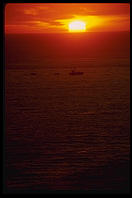 Once you've got all your rolls organized
into slide-saver pages, put them back down on the light table and look at the
good pictures with a loupe. A very good loupe. With the money you saved on the
lightbox, you can afford the best: a Schneider. Get the 4X for viewing 35mm
full-frame ($110, comes in several exciting colors now). When you see the
sharpness and color saturation of your images through the Schneider loupe, you
will quit your day job. Too bad your photograph will never ever look this good as
a Cibachrome, on a magazine page, or on a Web page.
Once you've got all your rolls organized
into slide-saver pages, put them back down on the light table and look at the
good pictures with a loupe. A very good loupe. With the money you saved on the
lightbox, you can afford the best: a Schneider. Get the 4X for viewing 35mm
full-frame ($110, comes in several exciting colors now). When you see the
sharpness and color saturation of your images through the Schneider loupe, you
will quit your day job. Too bad your photograph will never ever look this good as
a Cibachrome, on a magazine page, or on a Web page.
[There are other loupes worth having. If you make 6x6cm images, you will love the Schneider 6x6 magnifier ($215), which can also be used with 35mm images almost as effectively as the 4x. You might also want a high magnification loupe for deciding whether something is sharp enough and/or too grainy. PEAKs are cheap but I'm not convinced that they are useful. Schneider makes a 10X ($231) loupe that is probably excellent but I haven't tried it.
A lot of people from Rodenstock to Hoya make imitations of the Schneider 4X loupe. They aren't much cheaper and I don't think they are worth the hassle of investigating.]
Use the Sharpie to mark the really good pictures or put a Post-It at the top of the page with the worthwhile frame numbers noted.
With negatives
Prepare for a confidence-destroying experience. Proof prints are generally
terrible but the negative contains a lot of information that can be extracted
with careful printing or with PhotoShop.
My favorite way of evaluating proofs is to have an enlarged contact sheet made. This can only be done by pro labs with 8x10 enlargers. What they do is flatten all the negs between glass just as they would for a regular contact sheet, but then stick the whole mess in the enlarger and project onto a 16x20" sheet of paper. This costs about $30 but lets you look at a whole roll at once. If your time is valuable it can be worth it, especially because you'll never spend a minute trying to match a proof to its negative.
